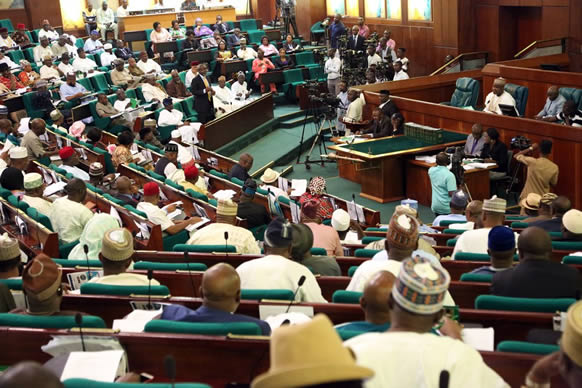President Bola Tinubu has been urged by the House of Representatives to thoroughly examine the Oronsanye report from 2012 as well as any other relevant findings and white papers before putting them into effect.
The House made this decision after Kama Nkemkanma, Olumide Osoba, and Jonathan Gbefwi jointly proposed a resolution of urgent national importance at Thursday’s plenary session.
The Goni Aji Report, which examined the Oronsanye Report, the White Paper issued by the President Jonathan administration, the Ama Pepple White Paper, and the Ebele Okeke White Paper in accordance with current realities, was thoroughly reviewed by the Green Chamber, which urged the President to consider implementable alternatives that are in line with current realities.
When Nkemkanma presented the motion, she reminded the audience that the Jonathan administration had established the Presidential Committee on the Rationalization and Restructuring of Federal Government Parastatals, Commissions, and Agencies in 2012. Stephen Oronsaye, a retired federal civil servant and former Head of Service of the Federation, chaired this committee.
He emphasized that following their laborious job, the Oronsaye Committee suggested eliminating and combining 220 of the 541 government entities that were in existence at the time.
The member drew attention to the Committee’s 800-page report, which recommended that 89 agencies have their management audited, 52 be consolidated, and 14 be returned to departments within ministries in addition to reducing the number of statutory agencies from 263 to 161. The report also highlighted the overlap in the roles played by government agencies and parastatals.
Nkemkanma stressed that if the committee’s suggestion was implemented, the government would save more than N862 billion between 2012 and 2015, as stated in the Oronsaye Report at the time. According to a breakdown of the savings, the proposed elimination of agencies would provide about N124.8 billion, the proposed merger of agencies would provide about N100.6 billion, professional bodies would provide about N6.6 billion, universities would provide about N489.9 billion, polytechnics would contribute about N50.9 billion, colleges of education would provide about N32.3 billion, and boards of federal medical centers would provide about N616 million.
He drew attention to the fact that, in response to the committee’s conclusions, the White Paper committee of the Jonathan administration rejected most of the recommendations, with the recommendations that were approved not being implemented.
The lawmaker further recalled that in November 2021, the President Muhammadu Buhari administration inaugurated two committees — one of the committees Chaired by Goni Aji, a retired Head of Civil Service of the Federation, was to review the Orosanye report and the second committee, chaired by Ama Pepple, also a retired Head of the Civil Service of the Federation, was constituted to review agencies created between 2014 and 2021.
He pointed out that upon submission of their reports, the Muhammadu Buhari-led federal government in July 2022 set up another committee chaired by Ebele Okeke, a former Head of the Civil Service of the Federation to produce a white paper on the reports.
Nkemkanma expressed worry over the full implementation of a report 12 years after it was first made, which ordinarily might be described as outdated, especially because of how dynamic the society, economy, polity, technology and all facets of national life have been.
He expressed worry that the full implementation of the 2012 Oronsaye report in 2024 will certainly throw up unintended consequences, implications and outcomes.
The House resolved: “Urge President Bola Ahmed Tinubu to comprehensively review the 2012 Oronsaye Report, the Goni Aji Report which reviewed Oronsanye Report, the White Paper released by the President Jonathan administration, the Ama Pepple White Paper and the Ebele Okeke White Paper in line with current realities while considering implementable alternatives that are in tune with current realities, and which at the same time would have minimum unintended consequences, impacts, implications and outcomes.”









